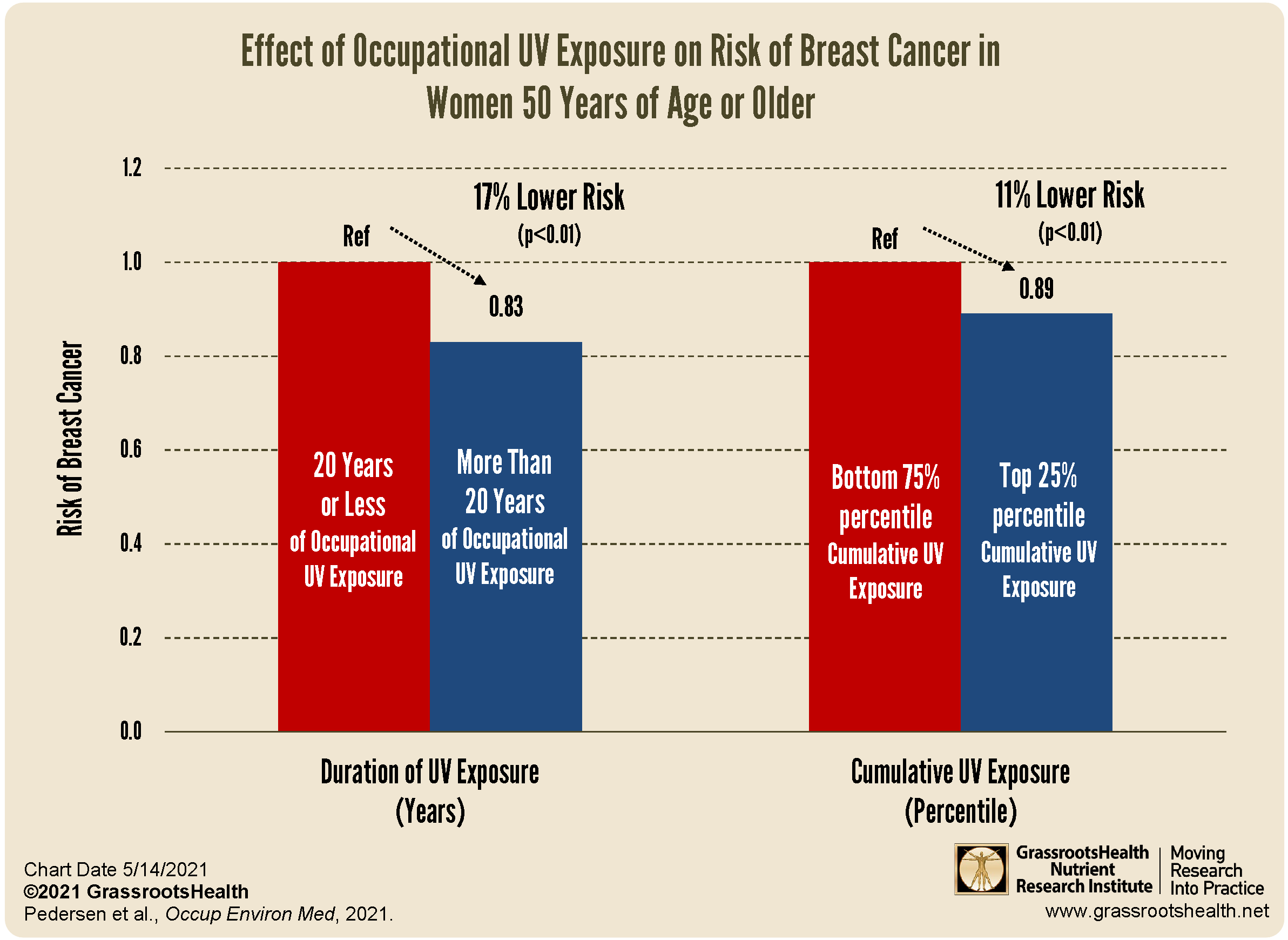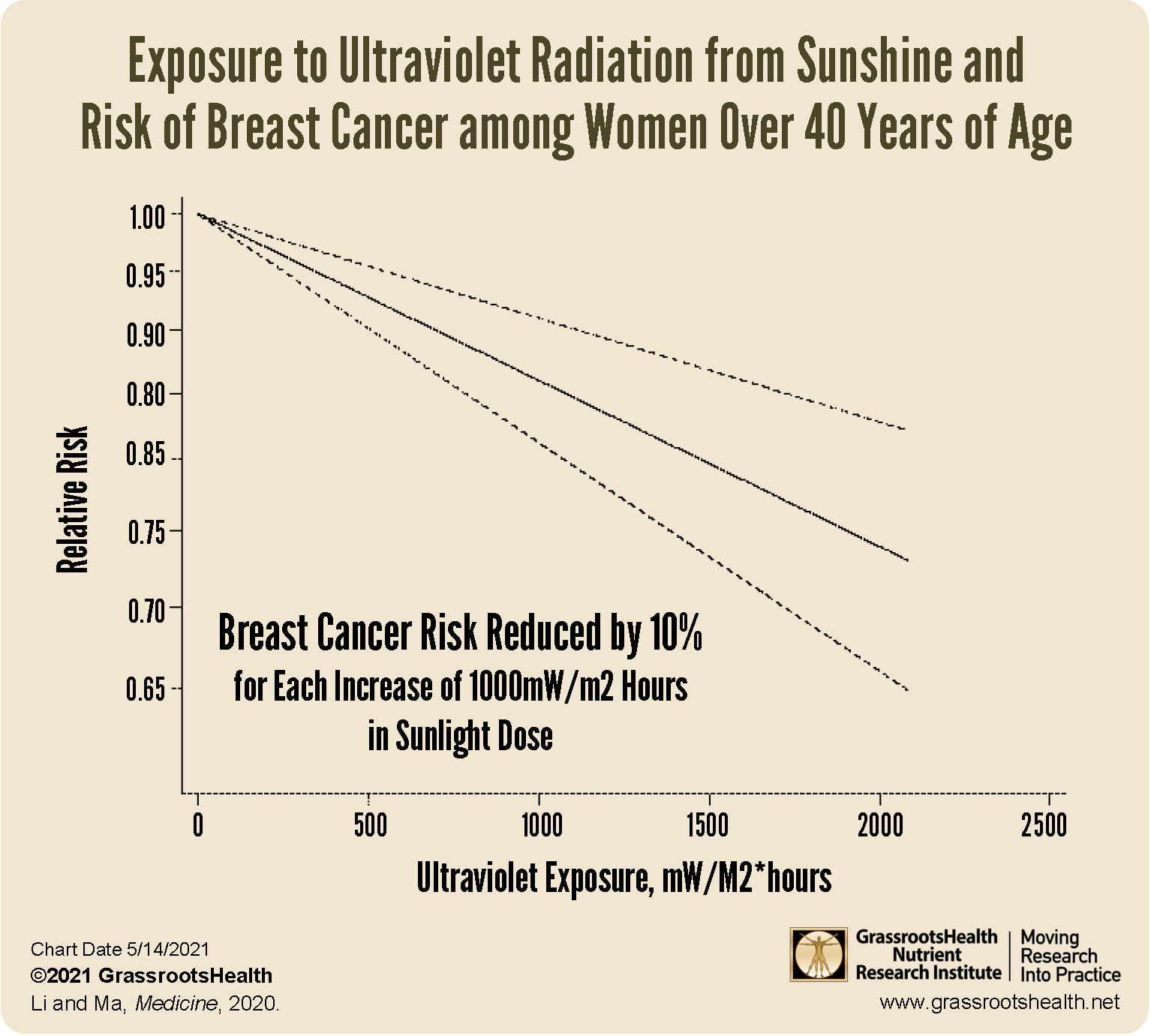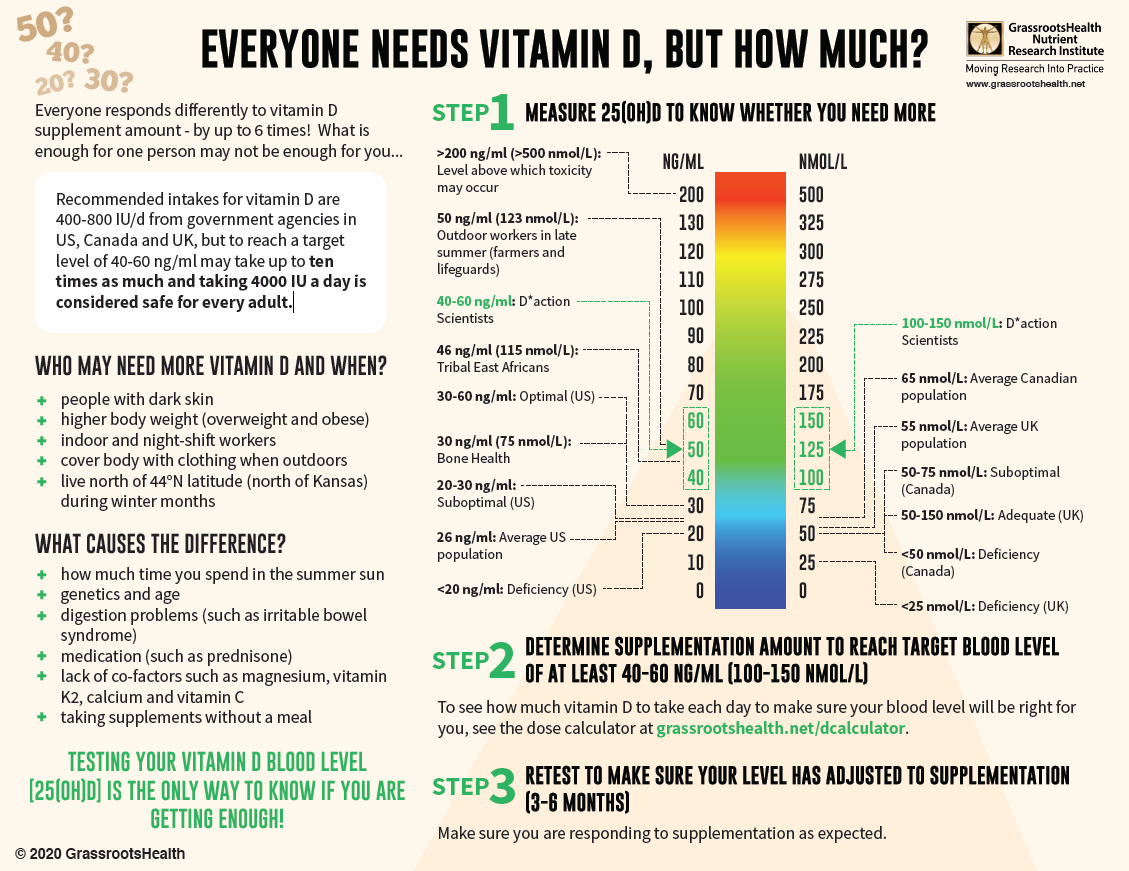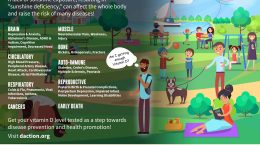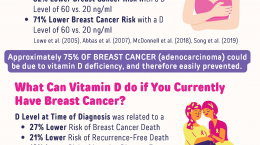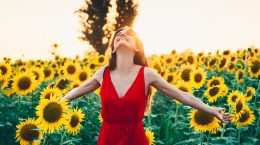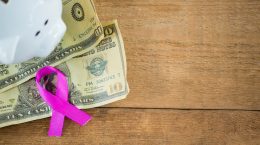Published on October 19, 2022
Women with long-term UV exposure found to have a lower risk of breast cancer, especially with diagnosis in older age
Key Points
- One study found a 17% decreased risk for late-onset breast cancer (diagnosed at 50 years or older) with longer duration of UV exposure (more than 20 years exposure, OR=0.83), an 11% decreased risk with higher cumulative UV exposure (top 25% percentile of exposure, OR=0.89), and a 15% decreased risk overall associated with longer duration of UV exposure (more than 20 years, OR=0.85) for all diagnosis ages combined
- In this study, longer durations and higher amounts of UV exposure contributed to a further decreased risk — for safe sun exposure, always remember, don’t burn!
- A separate meta-analysis found a significant dose-response correlation between UV exposure and breast cancer risk such that women in the highest exposure groups had a 30% lower risk of breast cancer compared to women in the lowest exposure groups; in women over 40 years of age there was a breast cancer risk reduction of 10% for each increase of 1000 mW/m2 hours in the dose of sunlight
 Breast, lung, and colorectal cancer account for 50% of all new cancer diagnoses in women and breast cancer accounts for 30% of these newly diagnosed cancer cases. It is also one of the most readily preventable cancers.
Breast, lung, and colorectal cancer account for 50% of all new cancer diagnoses in women and breast cancer accounts for 30% of these newly diagnosed cancer cases. It is also one of the most readily preventable cancers.
Research on breast cancer and vitamin D levels has shown that women with vitamin D levels at or above 60 ng/ml (150 nmol/L) had an 80% lower breast cancer risk compared to women with levels less than 20 ng/ml (50 nmol/L). Similar results have been found among women in the United Kingdom — an 83% lower breast cancer risk with vitamin D levels above 60 ng/ml. A 2019 meta-analysis by Song et al. analyzed data from 70 observational studies and found a 6% lower risk of developing breast cancer for every 2 ng/ml (5 nmol/L) increase in vitamin D blood levels.
If Higher Vitamin D Levels Can Decrease Breast Cancer Risk, Could More Sun Exposure Decrease Risk as Well?
Vitamin D is produced in the skin upon exposure to UVB, therefore, individuals who get more sunshine and exposure to UVB are known to have higher vitamin D levels compared to those who don’t. Since higher vitamin D levels are related to lower cancer risk, could the decreased risk of breast cancer also be seen among those who get more exposure to sunshine?
One study that aimed to answer this question, by Pedersen et al., included data from 38,375 Danish women, 70 years of age or younger, who had been diagnosed with breast cancer, and 191,875 controls who were breast cancer free. They looked at the employment history of all the women to see if there was a correlation between breast cancer incidence and long-term, occupational UV exposure. While they did not find any notable effect of occupational UV exposure for early onset breast cancer specifically (diagnosed before the age of 50), they did find a 17% decreased risk for late-onset cancer (diagnosed at 50 years or older) with longer duration of UV exposure (more than 20 years exposure, OR=0.83) and a 11% decreased risk with higher cumulative UV exposure (top 25% percentile of exposure, OR=0.89). Also, the researchers found a 15% decreased risk overall associated with longer duration of UV exposure (more than 20 years, OR=0.85) for all diagnosis ages combined.
To summarize, this study found that long-term occupational UV exposure was associated with a reduced risk of late-onset breast cancer among Danish women, and that longer durations and higher amounts of UV exposure contributed to a further decreased risk.
Relationship Between UV Exposure and Breast Cancer Risk Confirmed with this Meta-analysis
A dose-response meta-analysis on UV exposure and breast cancer risk, by Yilun Li and Li Ma, aimed to quantify the relationship between the amount of UV exposure and breast cancer risk. They included six case-control studies and conducted a dose-response meta-analysis, with an additional analysis by age, sunscreen use, and limb coverage.
The authors found a significant dose-response correlation between UV exposure and breast cancer risk such that women in the highest exposure groups had a 30% lower risk of breast cancer compared to women in the lowest exposure groups (OR=0.70, p<0.001). A significant dose-response relationship in women over 40 years of age was found which showed a breast cancer risk reduction of 10% for each increase of 1000 mW/m2 hours in the dose of sunlight.
Overall, this study saw a negative correlation between UV exposure and breast cancer risk, especially among women over 40 years of age; women who did not tan or who covered their arms and legs while in the sun also had a higher risk of breast cancer.
Be Sure to Get Your Vitamin D Levels into the Cancer-Prevention Range!
With almost 90% of the general population having vitamin D levels below the recommended 40-60 ng/ml (100-150 nmol/L), it is obvious that most people need more vitamin D. While most of us cannot achieve a vitamin D level of 40-60 ng/ml from sun alone, either due to our lifestyle, where we live, or other circumstances, we can certainly reach those levels with the right amount of supplementation.
Below is a guide for how much you might need, and who may need more. Your levels can be tested safely at home – order your home test kit today.
Vitamin D is an Easily Modifiable Factor to Help Improve Disease Outcomes – Check Your Level Today
 Having and maintaining healthy vitamin D levels and other nutrient levels can help improve your health now and for your future. Choose which to measure, such as your vitamin D, omega-3s, and essential minerals including magnesium and zinc, by creating your custom home test kit today. Take steps to improve the status of each of these measurements to benefit your overall health. You can also track your own intakes, symptoms and results to see what works best for YOU.
Having and maintaining healthy vitamin D levels and other nutrient levels can help improve your health now and for your future. Choose which to measure, such as your vitamin D, omega-3s, and essential minerals including magnesium and zinc, by creating your custom home test kit today. Take steps to improve the status of each of these measurements to benefit your overall health. You can also track your own intakes, symptoms and results to see what works best for YOU.
Enroll and test your levels today, learn what steps to take to improve your status of vitamin D (see below) and other nutrients and blood markers, and take action! By enrolling in the GrassrootsHealth projects, you are not only contributing valuable information to everyone, you are also gaining knowledge about how you could improve your own health through measuring and tracking your nutrient status, and educating yourself on how to improve it.


